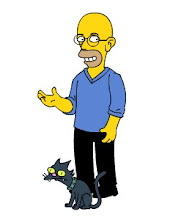
Mammoth opens with the discovery of the frozen remains of a mammoth in North America. This discovery is part of a research project run by Howard Christian, a super-rich entrepreneur, to clone a mammoth from frozen DNA. However, it is overshadowed by the more significant discovery of two humans with the mammoth, one of whom is wearing a wristwatch. Further investigation finds a strange accompanying machine, presumed to be a time machine. Howard then hires Matt Wright, a brilliant but frazzled theoretical physicist, to study and replicate the machine. Working alongside the mammoth cloning project, Matt meets Susan Morgan, an experienced elephant trainer, hired by Howard to ensure the successful birth of a cloned mammoth from an elephant mother. The disruptive intervention of incompetent anti-cloning activists somehow jars the uncompliant time machine into operation, sending Matt and Susan 10,000 years back in time to encounter Little Fuzzy, a baby mammoth ...
Mammoth is a rather fast-paced science fiction techno-thriller which, at a first glance, resembles works by renowned hack writer Michael Crichton (specifically the reasonably good Jurassic Park, and the apparently risible Timeline). However, this comparison is rather unfair. While it doesn't really reach the heights of Varley's other works, Mammoth is clearly separated from Crichton's novels by more intelligent plotting and credible characters. For Crichton, characters are essentially talking heads that act to advance the action. Varley invests a lot more time building his up, and weaving them into plausible relationships. Given the relatively rollercoaster nature of the plot, we're not talking about characters in the literary fiction sense, but these are on the well-developed side of science fiction.
The time travel plot is rather playfully handled by Varley. This playfulness begins with the machine itself, which is described as a superficially simple device containing a matrix of caged spheres (= marbles). Varley leaves its mode of operation fairly mysterious - in fact, the closest he gets to explaining how it works is when the matrix of spheres reorganises itself and some appear to disappear. This is explained by the suggestion that the spheres are now in another dimension. Varley also throws in some discussion of the paradoxes of time travel, which includes an amusingly dismissive reference to his own earlier novel, Millennium. As for the origin of the time machine, well, Varley creates quite a paradox there too. Although Matt builds a functional time machine based on the remnant discovered with the frozen mammoth, and although the route by which the remnant got to where it was found is outlined, there's nothing to say where, or when, or via whom, the machine came into existence in the first place. All things considered, this is probably the most satisfactory way to tidy up time travel stories - that is, not to tidy them up.
In passing, in what's quite a nice touch, Varley uses a children's storybook describing the adventures of Little Fuzzy to frame the novel. Rather than use a heavy-handed talking head (as Crichton would do), this approach allows Varley to use a completely different voice (so, OK, it may just be a "talking head") to summarise and simplify parts of the story. Since these parts often deal solely with mammoths, this permits their anthropomorphisation, without it being clumsy. It's a children's book after all.
As will come as no surprise to readers of Varley's website, he also slips a large dose of anti-Bush criticism into the novel. Mostly via the interrogation scenes that follow Matt's return to the present day. Perhaps reluctant to come over as an unthinking critic of Bush, Varley qualifies this criticism with a degree of realism. While critical of the current government, he certainly has no truck with those who would put the government on the same footing as terrorists. There's something in that, of course, but it perhaps isn't as effective as Varley intended.
Anyway, overall it's an enjoyable, fairly pulpy romp. Hopefully Varley will be returning to his Eight Worlds before too long, however.






No comments:
Post a Comment